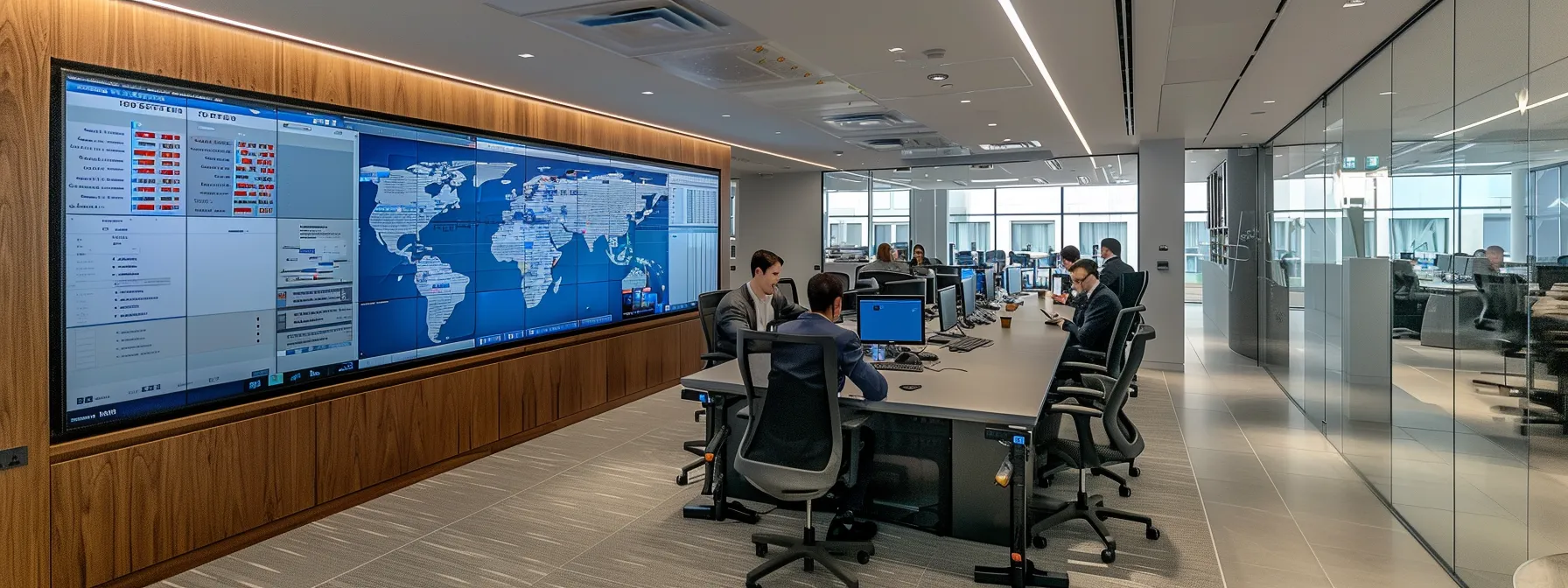
How Seamless Claim Processing Streamlines Workflow and Accelerates Claim Settlement Times
Many healthcare providers and billing staff face delays in claim settlements, which can hinder cash flow and operational efficiency. This article examines how seamless claim processing can streamline workflows, noticeably accelerate claim settlement times, and optimize revenue cycle management. Readers will understand the importance of efficient workflows and discover practical examples of successful implementations. By addressing these key areas, this content offers actionable insights that can help healthcare practices enhance their operational performance and reduce administrative bottlenecks.
Understanding Seamless Claim Processing and Its Impact on Workflow Efficiency

Seamless claim processing is defined as a streamlined approach that enhances the efficiency of handling claims. Key elements such as claims automation and effective data collection play critical roles in achieving transparency throughout the workflow. These innovations not only improve the accuracy of submissions but also support claims adjusters in expediting settlement times, enabling providers to focus on patient care rather than administrative delays.
Definition of Seamless Claim Processing
Seamless claim processing refers to an efficient approach within the insurance claims process that simplifies the way insurers handle and settle claims. By leveraging user-friendly interfaces and automated systems, healthcare providers can easily manage documents related to insurance policies, allowing for faster submission and processing of claims. This streamlined approach not only reduces administrative burdens but also ensures that accurate and timely information is readily accessible, ultimately leading to quicker resolutions and improved patient care.
Key Elements That Facilitate Seamless Processing
Key elements that facilitate seamless claim processing include robust organization and a well-designed infrastructure that aligns with the standards set by the insurance regulatory and development authority. For example, integrating automation tools allows healthcare providers to manage auto insurance claims with greater efficiency, reducing the time spent on manual data entry. Effective resource allocation ensures that administrative tasks do not overwhelm healthcare professionals, allowing them to prioritize patient care while enhancing the overall workflow for faster claim settlements.
How Seamless Processing Reduces Claim Settlement Times

Automated data entry and validation significantly enhance claims processing by minimizing human error and ensuring accurate policy information. Real-time tracking of claims status enables customers to monitor progress closely, providing transparency and reducing uncertainty. Furthermore, the integration of advanced technologies optimizes workflows, streamlining the settlement of injury claims while fostering efficient communication between all parties involved.
Automated Data Entry and Validation
Automated data entry and validation are critical components of effective claims management, particularly in the realm of auto claims. By utilizing advanced software development techniques, healthcare providers can minimize human error and significantly enhance data accuracy throughout the claims process. This increased precision not only boosts productivity but also ensures timely processing, allowing providers to respond swiftly to claims inquiries and improve overall service delivery.
Real-Time Tracking of Claims Status
Real-time tracking of claims status is a vital component of effective claims handling that enhances the overall workflow efficiency for healthcare providers. By providing immediate visibility into each stage of the claims process, this capability allows the workforce to identify and address potential issues before they escalate into larger problems, thereby reducing risk. Furthermore, it supports quality assurance measures, ensuring that every claim is processed accurately and efficiently, which ultimately contributes to higher patient satisfaction and customer retention.
Integration of Advanced Technologies
The integration of advanced technologies plays a crucial role in enhancing case management within the claims process. By leveraging these tools, healthcare providers can improve customer engagement and ensure that life insurance claims are processed more efficiently. This not only leads to a higher return on investment but also equips staff with the knowledge needed to address inquiries, reducing response times and increasing overall satisfaction among clients.
The Role of Workflow Optimization in Claim Processing

Streamlining documentation and communication is essential for optimizing workflows in claims processing. Enhanced collaboration among stakeholders ensures that all parties remain informed and engaged, reducing the chances of delays. By minimizing bottlenecks in the process, including the utilization of advanced fintech solutions and machine learning tools in medical billing, the efficiency of audits and overall claim settlement times improve significantly.
Streamlining Documentation and Communication
Streamlining documentation and communication within the claims processing workflow enhances efficiency and supports compliance with industry regulations. By utilizing deep learning technologies, organizations can automate routine tasks, ensuring that all necessary documents are accurately processed while maintaining a strong reputation for reliability. This approach not only caters to consumer needs for timely updates but also effectively manages liability insurance claims, reducing potential disputes and fostering a transparent environment.
Enhancing Collaboration Among Stakeholders
Enhancing collaboration among stakeholders is vital for optimizing claim processing and improving operational efficiency. By establishing a robust data model that connects various parties, including insurance providers, healthcare providers, and billing teams, organizations can effectively manage unstructured data and ensure seamless communication. This collaborative approach not only strengthens data security but also minimizes delays in claim settlements by allowing stakeholders to address potential issues in real-time, thus fostering a smoother workflow.
Minimizing Bottlenecks in the Process
Minimizing bottlenecks in the claims process is essential for enhancing the customer journey and ensuring swift claim settlements. By implementing connected claims systems, healthcare providers can streamline document processing, allowing for seamless data exchange between all parties involved. This digital transformation not only improves visibility across the workflow but also accelerates the resolution of claims, significantly reducing the time and effort required for each stage of the process.
Benefits of Accelerated Claim Settlements for Businesses

Accelerated claim settlements significantly enhance customer satisfaction, operational efficiency, and cash flow management. By improving the claims process architecture, businesses can increase the frequency of successful claims resolutions. This leads to better financial sustainability and allows chief executive officers to focus on strategic initiatives rather than administrative challenges, reinforcing the value of streamlined workflows within healthcare organizations.
Increased Customer Satisfaction
Accelerated claim settlements contribute significantly to increased customer satisfaction within the insurance industry. When commercial claims, including those arising from accidents or other complex claims, are processed quickly and accurately, clients experience reduced anxiety and increased trust in their providers. This efficiency not only enhances the overall customer experience but also fosters long-term relationships, encouraging clients to choose the same providers for future needs.
Improved Operational Efficiency
Improved operational efficiency is a direct outcome of accelerated claim settlements, significantly impacting resource allocation and customer service. By implementing robotic process automation, healthcare providers can streamline repetitive tasks, enabling staff to focus on more strategic initiatives that enhance the overall customer experience. Furthermore, leveraging analytics to monitor performance allows organizations to identify bottlenecks quickly, optimizing digital customer journeys and ensuring timely resolutions that foster satisfaction and loyalty among clients.
Enhanced Cash Flow Management
Enhanced cash flow management is a significant benefit of accelerated claim settlements, particularly in the context of insurance claims. When providers can quickly resolve claims related to total loss or other substantial damages, they gain faster access to funds, improving their financial position. Moreover, utilizing technology such as natural language processing allows for more efficient invoice handling and data processing, reducing administrative time and errors, which ultimately leads to healthier cash flow dynamics.
Measuring the Success of Seamless Claim Processing

Key performance indicators to monitor play a vital role in assessing the efficiency of seamless claim processing. Utilizing advanced technology solutions helps organizations track progress in real-time, enhancing insurance claims management. Additionally, implementing continuous improvement strategies ensures that claims processing automation is effective, ultimately benefiting the digital customer experience and leading to quicker claim settlements.
Key Performance Indicators to Monitor
Monitoring key performance indicators (KPIs) is essential for assessing the effectiveness of seamless claim processing. Metrics like data management efficiency and the utilization of claims management systems can reveal insights into process improvements. Additionally, employing predictive analytics through mobile app technology aids in better forecasting claim trends and streamlining inspection processes, ultimately resulting in faster settlements and enhanced overall operational efficiency.
Technology Solutions for Tracking Progress
Technology solutions for tracking progress in seamless claim processing play a crucial role in enhancing reimbursement outcomes. By leveraging advanced tools such as computer vision, healthcare providers can automate data entry, significantly reducing the potential for errors while increasing productivity. This not only supports scalability but also provides a competitive advantage in the marketplace by ensuring that claims are processed more efficiently, leading to quicker settlements and improved service delivery for patients.
Continuous Improvement Strategies
Continuous improvement strategies in claims processing are vital for establishing a reliable framework that enhances operational efficiency. By implementing automation, organizations can create a single source of truth for all insurance claims data, ensuring that underwriting and claims information are consistent and accessible. This approach not only reduces the potential for errors but also fosters a proactive environment where teams can identify bottlenecks and implement solutions, ultimately leading to faster claim settlements and improved customer satisfaction.
Real-World Examples of Successful Implementation
Case studies of organizations that have optimized workflow through seamless claim processing illustrate the significant impact on settlement times. These examples showcase metrics demonstrating reduced processing durations and improvements in operational efficiency. Lessons learned from various industries highlight best practices in leveraging technology and intelligence, offering valuable insights for insurers seeking to enhance their claims processes. Organizations interested in discovering these benefits can consider requesting a demo to see the advantages firsthand.
Case Studies of Organizations That Optimized Workflow
Organizations in the health care sector have successfully optimized workflows by implementing seamless claim processing systems. One notable example involves an emergency medical services provider that integrated a first notice of loss (FNOL) solution into its triage process. This allowed for quicker documentation of emergency incidents, enabling staff to focus their attention on patient care while significantly reducing claim settlement times through streamlined communication and data management. Such case studies illustrate how targeted automation can enhance operational efficiency and meet the increasing demands of health care providers in managing urgent claims effectively.
Metrics Showing Reduction in Settlement Times
Metrics derived from organizations that have implemented seamless claim processing solutions demonstrate significant reductions in settlement times. For instance, a recent press release highlighted a healthcare provider that achieved a 30% decrease in average claim processing durations through efficient data extraction techniques and automation tools. These improvements not only enhance operational performance but also boost customer satisfaction, showcasing the direct link between optimized workflows and successful employment of technology in the claims space.
Lessons Learned From Various Industries
Lessons learned from various industries highlight the importance of optimizing workflow to enhance efficiency in claim processing. For example, financial services firms have successfully integrated optical character recognition technology within their interfaces, significantly accelerating the handling of claims and documentation. These innovations not only streamline operations but also provide valuable insights into best practices that healthcare providers can adopt to improve their claims management systems.
Conclusion
Seamless claim processing is essential for enhancing workflow efficiency and accelerating claim settlement times in healthcare. By integrating automation and real-time tracking, providers can significantly reduce administrative burdens, allowing more focus on patient care. The implementation of advanced technologies fosters collaboration and minimizes bottlenecks, leading to improved operational performance. Prioritizing these practices leads to greater customer satisfaction and financial stability within healthcare organizations, making seamless claim processing a crucial investment.

